Rolling out a 9-day fortnight: how it works in real life
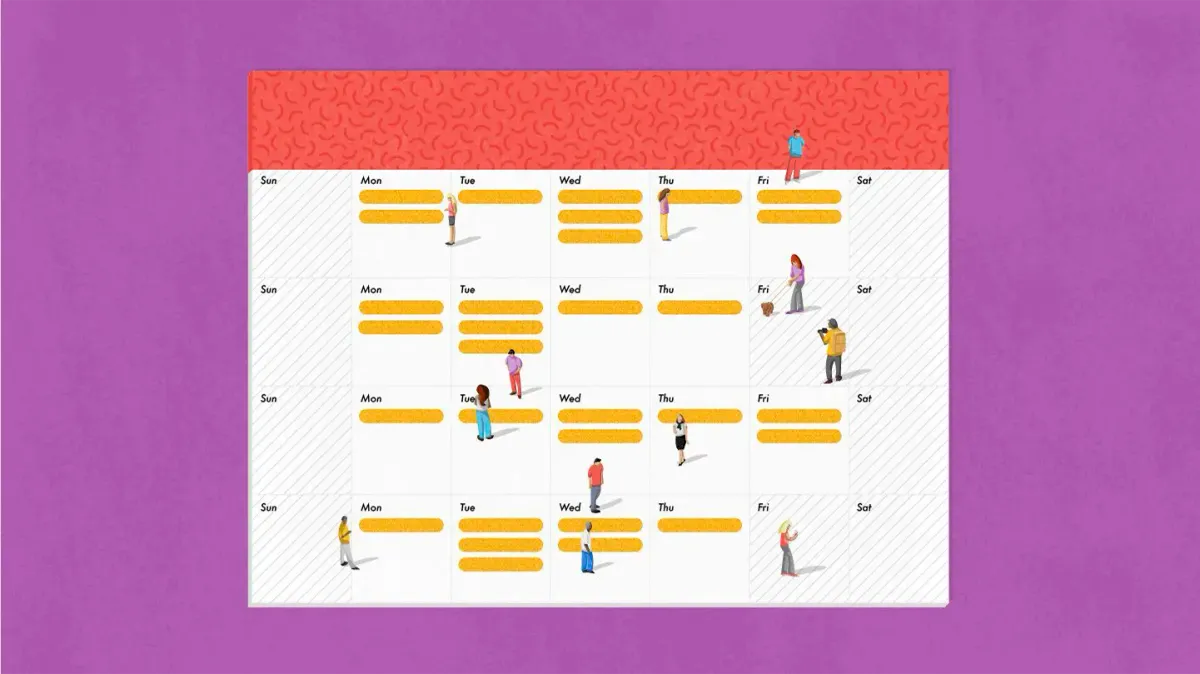
Back in September 2021, we rolled out a trial for our nine-day-fortnight (read more about it right here) – our teams wouldn’t work every other Friday with no change in salary, holiday entitlement or working hours.
This was a really exciting time for Charlie. After putting our hybrid working model and nomad working policies into place, we couldn’t wait to see how our twist on the 4 day work week would turn out for us.
After the end of this trial, we officially implemented our 9-day-fortnight policy permanently across the whole business.
In this blog post, we'll explain to you how we did it and more importantly, why that was important.
What is a 9-day fortnight?
A 9-day fortnight is a flexible way of working where your team members don't work every other Friday.
This allows them to have a Friday off every two weeks instead of every week (like in the 4-day work week), and still benefit from much-needed time off.
Our 9-day fortnight was implemented without:
- increasing our working hours
- changing the amount we get paid per month
- asking anyone to work way harder to achieve goals
- removing any holidays
Why we trialled a 9-day-fortnight in the first place
Many team members – yours included – would like to spend less time at work and more outside of it.
That doesn’t mean they don’t care about the work they’re doing, but that work is just one aspect of their life – business owners need to recognise that.
At Charlie, we’ve always tried to take this into account when building our policies, and that’s why we saw the rising trend of the 4-day work week as the revolution the world of work needed.
However, as ideal as it sounds, it’s not as easy to make it work on an operational level. So instead of diving head first without knowing what we wanted to achieve, we set a few goals that would set us on the right course:
- Building a successful business with high-performing and engaged team members – happy and efficient go hand-in-hand and one can’t live without the other, so how were we going to optimise for it?
- Improving our team members’ mental health – giving them a free day back would allow our team members to get the headspace they needed to rest and get back to work with renewed energy
- Finding new ways of working to improve productivity and efficiency – making sure there was more than enough time to focus on deep work and not be pulled in different directions with meetings
- Increasing our potential to hire and retain a brilliant and diverse team – creating progressive policies to put us at the forefront of forward-thinking companies and pull more people into the hiring pipeline
To do that, we came up with a way to make the experiment a good fit for our team:
- We wouldn’t work every other Friday
- Customer-facing teams would have a rota in place to provide adequate cover and a day off in lieu to make up for the Friday they’d have to work
- On longer weeks, we’d have what we called a Deep Work Wednesday where there’d be no meetings for the day to allow focus on deep work
If you want to find out more about it, you can download our 9-Day Fortnight policy for free below.
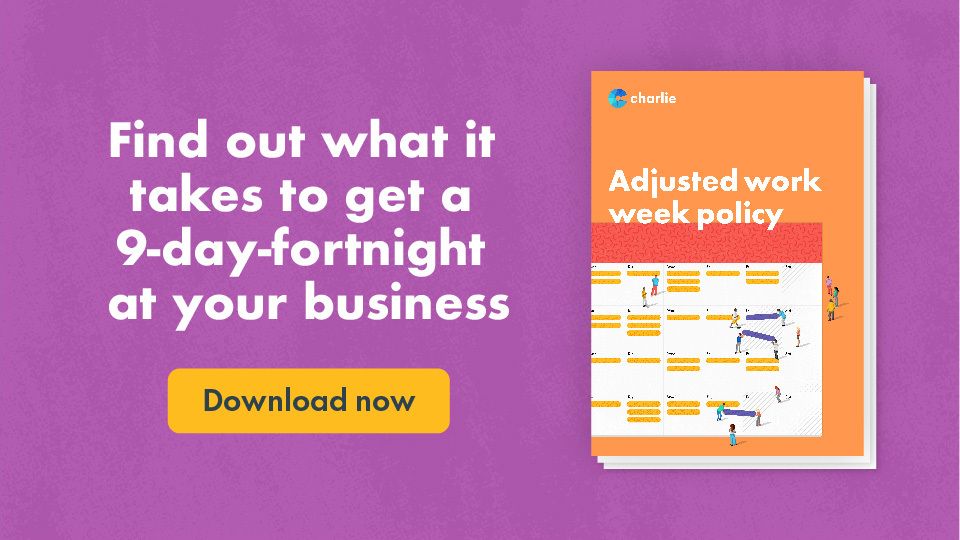
"I was thrilled to hear the 9 day fortnight would be something Charlie would do – it made me really confident that the company cared about our wellbeing and making sure we got enough time off. It was super exciting." Alex B. – Head of Engineering
Why we decided to make our 9-day-fortnight permanent
Deciding whether we would keep the 9-day-fortnight as part of our flexible working arrangements wasn’t done on a whim, and we made data-based decisions to ensure that this was both beneficial for the team and the business.
Here are the key metrics we decided to keep an eye on:
We surveyed our team members every month by asking them to report on:
- their levels of productivity throughout the week
- their ability to do deep work as well
- their work-life balance and how stressed they felt
- how able they were to disengage from work
- all on a scale from 1 to 10
We asked our team leaders and line managers to report on productivity every week as well by focusing on different aspects:
- How the trial impacted the team’s productivity – either a decrease or an increase
- If they noticed their team members’ working patterns change (if they started working longer hours or extra days on the short week)
- The difference between the outputs delivered by the team on short weeks compared to longer ones
- Whether they found the trial to be beneficial for their team and why
- If their teams were able to meet quarterly goals regardless of working one day less every two weeks
Following the results, we focused on the main goals we had set for ourselves and how successful each had been in making the final decision.
"As soon as we implement the 9-day fortnight, I could see that our team were way more motivated and put themselves even more into work – especially knowing that they'd be rewarded with an extra day off the week after. It was great to see." Amy C. – Chief Operations Officer
How the 9-day fortnight impacted our team’s wellbeing
According to the survey we sent out to the team monthly, we saw a 24% decrease on average in work-related stress across the whole company.
We also observed a 14% increase in the team’s ability to disengage from work during their free time. These were big wins for us as they clearly proved the positive impact of the 9-day-fortnight on our team’s mental health.
We also kept track of how many sick days and mental health days they were booking – just to make sure it aligned with the results we were seeing.
How the 9-day fortnight impacted our team’s performance
When it comes to productivity, our team members reported an 11% increase in their ability to focus and be productive and a 30% increase in their ability to do deep work.
As for team leaders, only 20% of them reported a decrease in productivity.
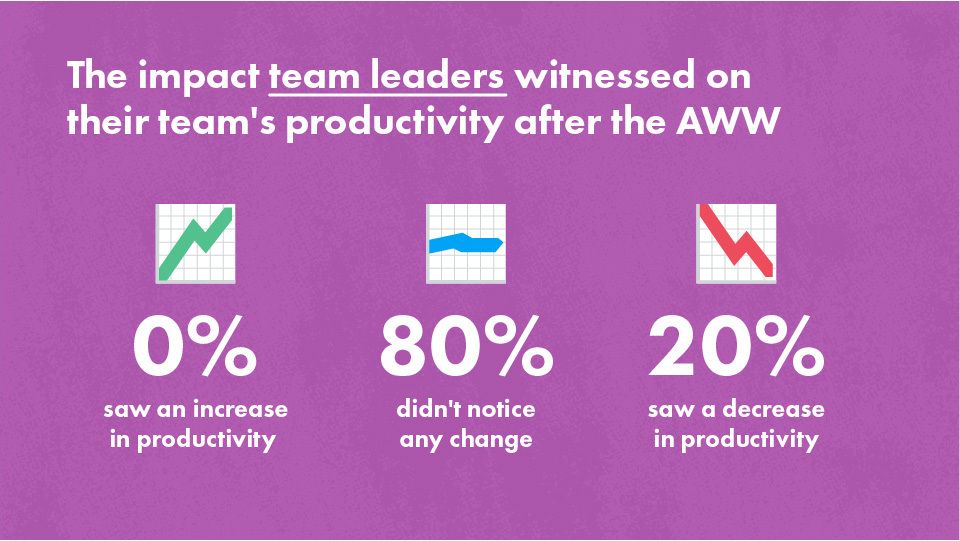
However, 57% of them never failed to hit their weekly targets on the shorter weeks due to the lack of time and almost 86% of them felt that they could hit all of their KRs despite the lack of time.
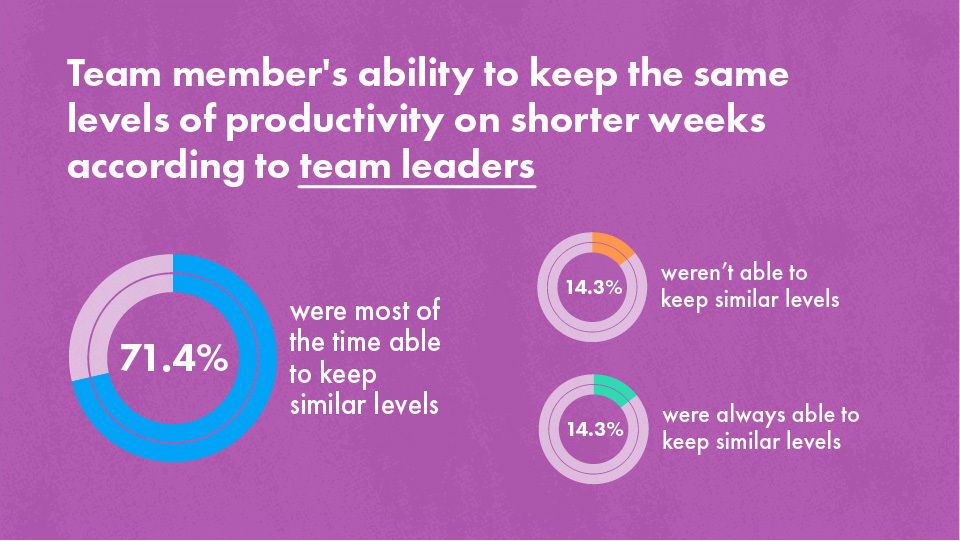
The reason behind reporting on both team members' and team leaders’ perspectives was important for us as it allowed us to note a discrepancy between performance across the fortnight.
Since it didn’t have a massive impact on our KRs, we felt moving forward with the 9-day-fortnight was still the right decision to make, but we’ll be looking at improving these scores.
"It's a no-brainer that we all benefited from it. Our performance wasn't highly impacted, and I personally felt more energy coming into work every day." Giulia T. – Marketing Lead
How the 9-day fortnight impacted our hiring process
Launching a 9-day-fortnight was a good way for us to attract new people. Of course, we wouldn’t want candidates to join in just because of that, but we were aiming to reinforce our employer branding.
Since we launched it, the 9-day-fortnight has been mentioned as one of the top three reasons for wanting to join Charlie after our flexible hours and our exploration days.
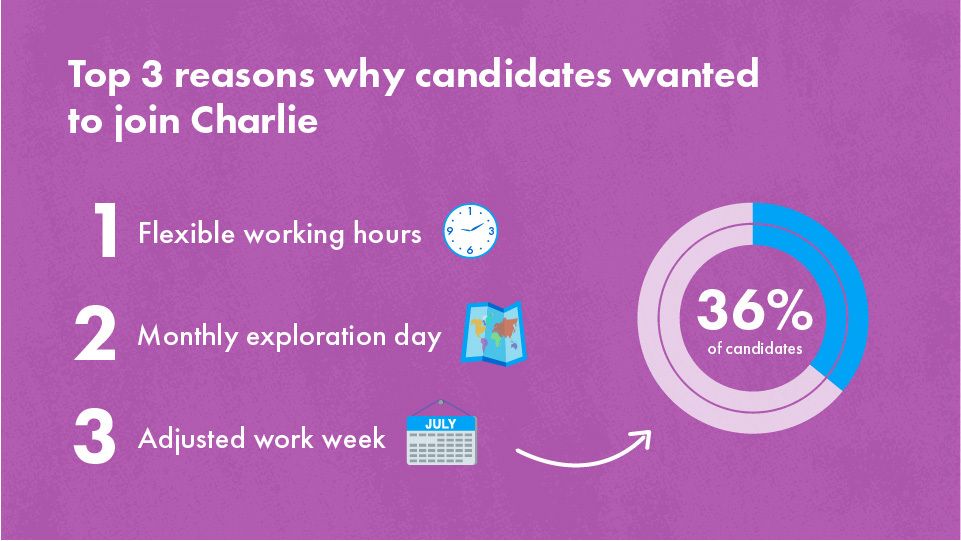
How can we make our 9-day fortnight more efficient and engaging?
Even though we decided to keep the 9-day-fortnight and make it permanent at Charlie, there’s still room for improvement.
By collecting the data and the feedback from team members, we chose to focus our work for the next few months on:
- Adjusting the difference in productivity throughout the fortnight – following feedback from our team members, we’ll do our best to optimise for organisation across the fortnight so everyone can use their time effectively
- Getting the right cadence for our company-wide meetings – making sure we have the right format so we don’t eat any time away
- Having a clear idea of when we would consider the levels of stress at the company to be too high and putting the right tools into place to support team members
- Asking for feedback around our 9-day-fortnight and iterating on the process as we go – nothing is set in stone!
We’ll keep you updated on how our 9-day-fortnight and the rest of our policies are doing in our weekly newsletter – click on the link below to subscribe!
"Out of all the benefits that exist at Charlie, this has to be the best... And maybe it can even be more important than the financial benefits sometimes, because extra time off is not something every company wants to give up, so it's great to see Charlie being at the forefront of companies making the switch." Adam S. – Brand and Creative Lead
Why we decided to go for a 9-day fortnight instead of a 4-day week
One big question we’ve been asked over and over is: why have we not decided to switch to a 4-day week?
There are quite a few reasons for that, and to be completely honest, it’s not to say that we will never do it. After all, our friends at Buffer have been doing very well with their own 4-day work week policy, and we might one day follow their lead – who knows?
For now, however, it’s not the right time for Charlie. Even though we’ve seen an improvement in many areas we were looking at, the results are still slightly unbalanced for us and we would only make this decision when we’re 100% happy with the way we work on both the shorter and the long week.
We hope you enjoyed our take on the 9-day fortnight and that you’ll have a look at perhaps implementing it at your company – if you want to review or create new HR policies, why not book a call with our HR advice team to discuss it?



